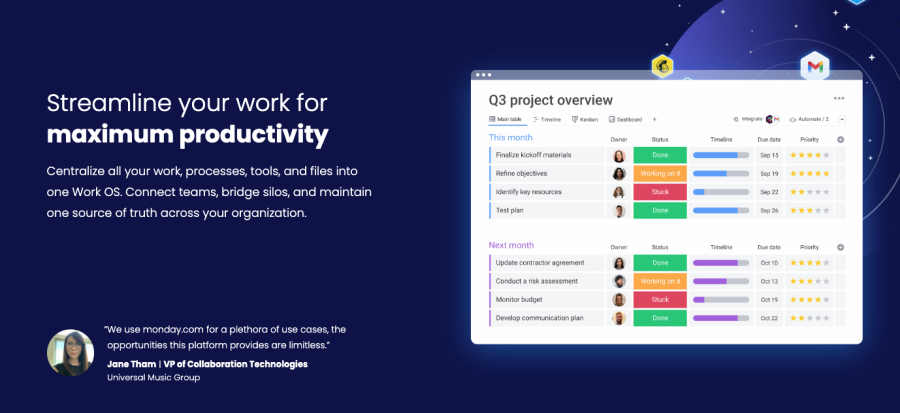
Monday.com Versus Asana.com | Comparison
Monday.com and Asana.com are two popular project management tools that help teams manage their workflows and collaborate seamlessly. While both platforms offer similar features, such as task management, visualization, and automation, there are some differences in user experience and customization abilities.
Monday.com is known for its Work Operating System (Work OS), which enables users to create custom, board-based workflows for different types of projects. Its user interface is visually appealing and easy to navigate, with features like drag-and-drop functionality, and searchable boards allowing users to manage tasks and deadlines easily. Additionally, Monday.com provides robust automation and integrations, making it a versatile choice for teams looking for a customizable and adaptable solution.
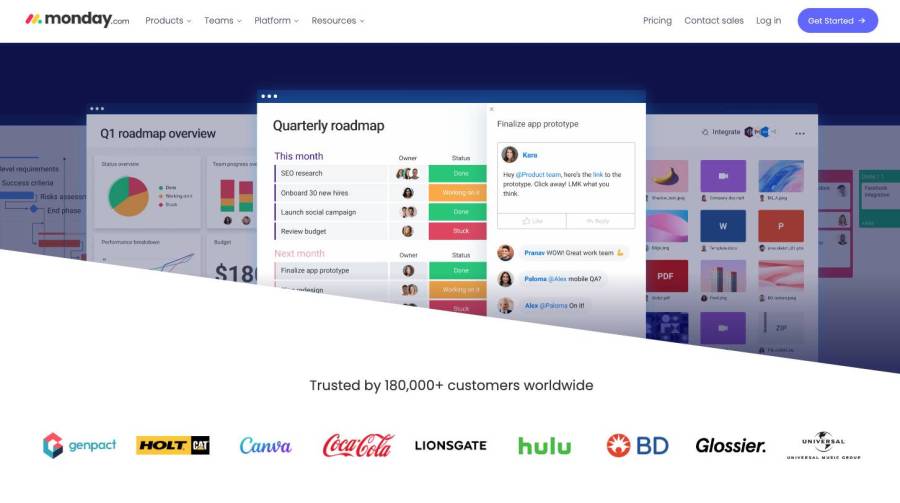
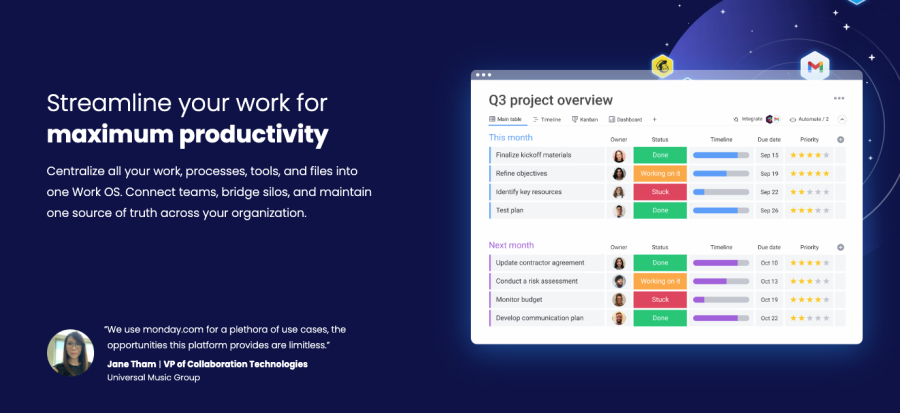
Asana.com, on the other hand, offers a more straightforward task management solution with features such as multi-device project views and the ability to track team progress with detailed reports.
The platform allows users to create tasks and sub-tasks, assign team members, and set deadlines. Asana’s goal-oriented approach helps teams focus on their objectives. Its clean interface keeps things simple with a smaller learning curve, making it ideal for teams that need a no-frills, efficient project management tool.
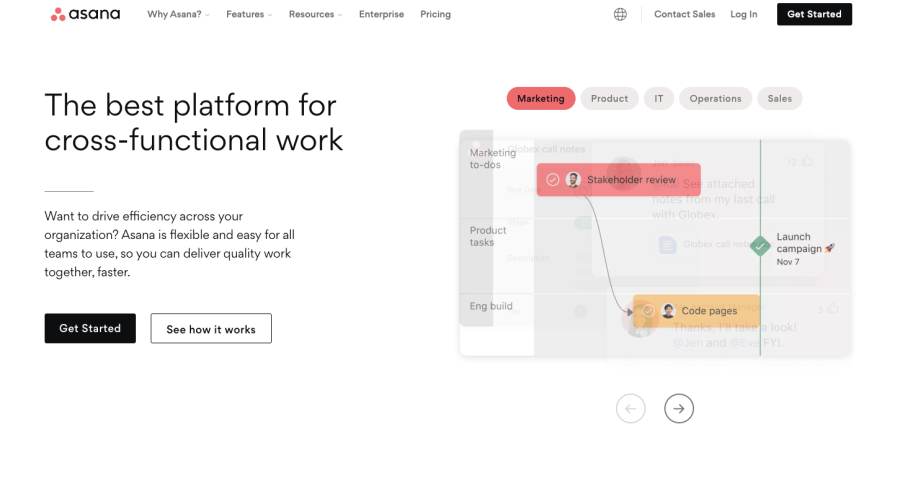
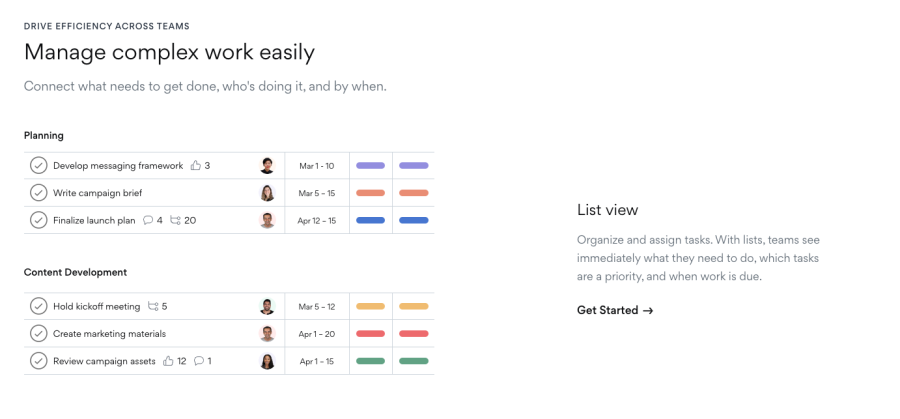
| Criteria | Monday.com | Asana.com |
|---|---|---|
| Pricing | Offers several pricing plans, with prices ranging from $8 to $16 per user per month. | Offers three pricing plans: Basic (free), Premium ($10.99 per user per month), and Business ($24.99 per user per month). |
| Features | Offers a wide range of features, including task management, time tracking, team collaboration, automation, integrations, and more. | Offers similar features to Monday.com, including task management, team collaboration, automation, integrations, and more. However, Asana.com also offers features like portfolio management, workload management, and custom fields. |
| User Interface | Has a clean and modern interface that is easy to use and navigate. | Has a clean and modern interface that is easy to use and navigate. However, some users may find that it has a steeper learning curve than Monday.com. |
| Customizability | Offers a high degree of customizability, allowing users to create their own boards, templates, and workflows. | Also offers a high degree of customizability, with features like custom fields, rules, and templates. |
| Integrations | Offers integrations with over 50 apps, including Slack, Google Drive, Trello, and more. | Offers integrations with over 100 apps, including Slack, Dropbox, Google Drive, and more. |
| Mobile App | Has a mobile app that is available for iOS and Android devices. | Also has a mobile app that is available for iOS and Android devices. |
| Customer Support | Offers customer support through email, phone, and chat. They also have a help center with articles and tutorials. | Offers customer support through email, phone, and chat. They also have a help center with articles and tutorials. |
| Security | Uses SSL encryption to protect user data, and also offers features like two-factor authentication and single sign-on. | Also uses SSL encryption to protect user data, and offers features like two-factor authentication and SSO. Additionally, Asana.com is SOC 2 Type II compliant. |
Pricing Plans
In terms of pricing plans, both Monday.com and Asana.com cater to a wide range of budgets, offering multiple pricing tiers, as well as free plans. Monday offers four pricing tiers: Basic, Standard, Pro, and Enterprise. The Basic plan starts at $8 per user per month and includes main features such as unlimited boards and 5 GB storage.
As users move up through the pricing tiers, additional features, and storage capacities are unlocked. The Enterprise plan provides even more advanced features and account customizations tailored to meet the needs of large organizations and comes with a custom pricing structure.
Asana also offers four pricing options: Free, Premium, Business, and Enterprise. The Free plan allows up to 15 users to collaborate on projects with basic features like task lists, Kanban boards, and calendar view.
Upgrading to Premium, which starts at $10.99 per user per month, provides features such as custom fields, advanced search, and timelines.
The Business plan, priced at $24.99 per user per month, caters to teams that need more control and customization with additional features such as rules automation and app integrations. Like Monday.com, Asana’s Enterprise plan offers enhanced security, support, and custom pricing to meet the requirements of large organizations.
Frequently Asked Questions (FAQ)
Q1: Is Monday.com or Asana.com better suited for project management?
A1: Both monday.com and asana.com are effective project management tools that facilitate seamless organization and execution of tasks. The choice between the two depends on your team’s preferences, desired level of customization, and specific business requirements.
Q2: How do the pricing models differ for Monday.com and Asana.com?
A2: monday.com provides a free trial and offers four pricing plans: Basic, Standard, Pro, and Enterprise. Prices start at $8 per seat per month. Asana, on the other hand, offers a free basic plan for up to 15 users, with a premium package starting at $10.99 per user per month. There is also a Business and Enterprise plan available.
Q3: Are both platforms user-friendly?
A3: Yes, both monday.com and asana.com have user-friendly interfaces that make them easy to navigate and understand. monday.com has a more visually appealing dashboard with a customizable board view, while Asana focuses on simpler list-like views with drag-and-drop functionality.
Q4: Can I integrate other tools with Monday.com and Asana.com?
A4: Yes, both platforms offer a wide range of integrations with popular tools like Google Drive, Slack, Trello, Microsoft Teams, and more. Each platform has its own unique integrations, ensuring flexible and personalized support for users’ existing workflows.
Q5: Can both platforms handle large teams and projects?
A5: Yes, both monday.com and asana.com are designed to support projects and teams of all sizes. Both platforms offer scalable solutions and collaboration tools suitable for small teams as well as large enterprises.
Q6: Do Monday.com and Asana.com offer reporting and analytics?
A6: Both platforms provide in-built reporting and analytics options to help users monitor project progress and team performance. monday.com has a strong emphasis on data visualization with graphs and charts, while Asana focuses on data-rich reporting with customized project views.
Q7: Are both platforms available on mobile devices?
A7: Yes, both monday.com and asana.com offer downloadable mobile applications for iOS and Android devices, ensuring users can manage and access their projects on-the-go.
Q8: Is my data secure on Monday.com and Asana.com?
A8: Data security is a top priority for both platforms. monday.com and Asana employ stringent security measures like encryption, regular backups, and monitoring systems to safeguard user data. Both platforms also comply with GDPR and other data privacy regulations.
Featured Image Credit: Provided by the Author; Thank you!

